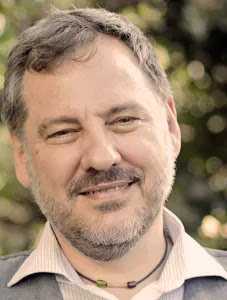Guest blog: Adil Najam: Global climate talks move to Marrakesh: Here’s what they need to achieve
Adil Najam is a Pakistani academic and intellectual who serves as the dean of the Pardee School of Global Studies at Boston University, and previously served as vice-chancellor of the LUMS. This blog is reprinted from the Conversation web site here.
Even though
evidence on an ever-worsening global climate keeps pouring in with alarming
frequency, the last 12 months have, in fact, been a relatively good
year for global climate policy. Next week, the world’s countries meet in
Marrakesh, Morocco, to follow up on the gains made at Paris last year, and to
try to reconcile these two facts.
The 22nd conference of the
parties (COP22) to the U.N. climate change convention in Marrakesh will not
result in a grand agreement or the grandiose chest-thumping that characterized
its Paris predecessor.
Yet, this meeting is a critical test of whether the parties to the Paris
Agreement are willing to realize, or capable of realizing, the promise of Paris
and creating a momentum for action.
Post-Paris cheers
COP22 will begin with good wind behind its sails, but under some very ominous clouds.
The most visible political gain has been the ratification in record time of the Paris Agreement, which enters into force Nov. 4. By joining, countries have shown a willingness to act on reducing national emissions, although they stopped short of taking on legal commitments. Notwithstanding the fact that the agreement is weak in terms of legally binding obligations, this rapid ratification signifies an important global buy-in.
Related signs of hope come from the two largest
emitters,
China and the United
States, that have begun investing in meaningful domestic initiatives. This
is assisted by a palpable shift in the market economics of renewables, especially
wind and solar, whose costs in some parts of the world is now rivaling
or less than coal.
By far the most important potential game changer in real climatic terms was the agreement in October to phase out the use of hydrofluorocarbons (HFCs), a strong greenhouse gas. If fully implemented, this could remove the equivalent of 70 billion tonnes of carbon dioxide from the atmosphere by 2050, mostly by developing countries.
Less consequential is the decision by the International Civil Aviation Organization to manage carbon dioxide emissions from international aviation through a carbon offset system. But it is still a step in the right direction. Unfortunately, the International Maritime Organization remained reluctant to agree to similar baby steps for the international shipping industry.
Post-Paris tears
On the other hand, the growing set of new scientific
evidence confirms climate change is no longer an issue of the future; it is the
most pressing challenge of now.
Every
month this year has been the hottest ever recorded for that month since
measurement began. This was yet another year of alarming
Arctic ice melt. And 2016
is poised to be the globally
hottest year ever in historical record and the 40th consecutive year that
the annual temperature would be above the 20th-century average.
The urgency of global climate change is evidenced by
the discovery that the atmospheric concentrations of carbon dioxide have
crossed 400
parts per million and are unlikely to drop below this level in our
lifetime. There should no longer be any doubt that we are quickly running out
of time.
As its host Morocco bills Marrakesh as “The COP of Action,”
COP22 should be judged by the extent and urgency
of implementable action that it triggers in three critical areas:
mitigation, adaptation and financing. And, within these, by how much attention
and investment is directed towards the needs of the most vulnerable countries.
Adaptation: Real resources needed
Financing: Show me the $100B
Mitigation: Raise ambitions
The goals of the Paris Agreement are
to reach a global peak in GHG emissions as soon as possible with the intent of
holding global average temperature increases to well below 2 degrees Celsius
above preindustrial levels and to pursue efforts to limit it to 1.5°C.
In support of this, countries have formulated their
voluntary commitments for the post-2020 period in the form of Nationally
Determined Contributions (NDCs). There will be an informal dialogue of
these NDCs in 2018 and a formal stocktaking to revisit these targets in 2023.
However, the current suite of
NDCs is simply not up to the task. Even with full
implementation, there will be an estimated global average temperature increase
of between 2.6°C and 3.1°C by 2100. Waiting for 2018 or
2023 to review national commitments is too long and condemns the planet to a
significant level of warming. For some island states, this could mean
devastation.
There is a need to quickly
raise ambitions. To come anywhere near the goals they have set for themselves
for the next 10-15 years, countries need to have already started making
significant, visible cuts in emissions. Most have not. Marrakesh needs to push
countries to increased ambition and accelerated emission cuts.
Adaptation: Real resources needed
Living as we already do in the “Age
of Adaptation,” it would be tragedy compounded if adaptation were to become
the lost issue of the Paris Agreement.
For many countries – especially the most vulnerable
developing countries that have had the least to do with causing the problem and
are least able to cope with its impacts – adaptation is not insurance for the
future; it is an urgent
need of today. Most often, the biggest challenges relate to water
and agriculture.
The issue is one of resources and investment. There
are plenty
of dedicated funds established to provide money for adaptation measures.
Too often, however, industrialized countries have failed to fulfill their
pledges, and access to funds is made difficult by complex procedure and
criteria.
Marrakesh needs to ensure that real money is available
for adaptation, including a greater share of resources from developed countries
dedicated to climate
change action in developing countries. And funds need to be accessible to
the countries most in need and on terms that meet their own national
capabilities and priorities.
The Paris Agreement calls on all countries to ensure
that finance flows worldwide are consistent with a pathway towards low
greenhouse gas emissions and climate-resilient development.
Developed countries have pledged to mobilize jointly
at least US$100
billion a year from public and private sources in support of mitigation and
adaptation in developing countries by 2020, to be scaled up over time as part
of the implementation of the Paris Agreement.
Finance discussions, however, are plagued
by political disagreements over what should legitimately be counted as
climate finance as well as data uncertainties and difficulties in correctly
calculating contributions from different sources.
Developing countries, especially small island states, worry that much of this
will be “imaginary
money” that will never materialize – at least not in ways in which it can
be deployed toward addressing their climate vulnerabilities and survival needs.
COP22 needs to directly address the issue and the
legitimate concerns of different stakeholders. A reasonable goal for Marrakesh
would be to bring more clarity to the finance issue including what dollars
count, how and for what, and how they flow, to whom and for what priorities.
Mitigation: Raise ambitions
The goals of the Paris Agreement are to reach a global peak in GHG emissions as soon as possible with the intent of holding global average temperature increases to well below 2 degrees Celsius above preindustrial levels and to pursue efforts to limit it to 1.5°C.
In support of this, countries have formulated their
voluntary commitments for the post-2020 period in the form of Nationally
Determined Contributions (NDCs). There will be an informal dialogue of these
NDCs in 2018 and a formal stocktaking to revisit these targets in 2023.
Make Marrakesh the ‘Action COP’
COP21 at Paris set for itself the goal of delivering
an agreement. It did. COP22 in Marrakesh has a much more difficult, and
important, goal. It must deliver action. This is not going to be easy.
If Marrakesh can build on the policy
momentum of Paris and the dire scientific warnings that have become
irrefutable to spur countries to real action, then it would achieve a
historic and heroic feat worthy of a true “Action COP.”





Admiring the persistence you put into your website and in depth information you present. It’s nice to come across a blog every once in a while that isn’t the same old rehashed material. Fantastic read! I’ve saved your site and I’m including your RSS feeds to my Google account.
ReplyDelete